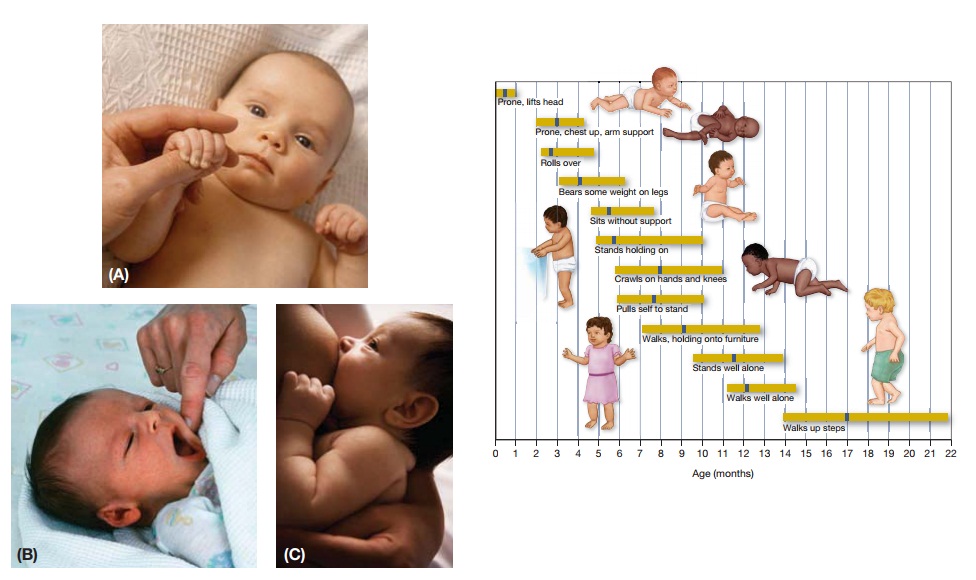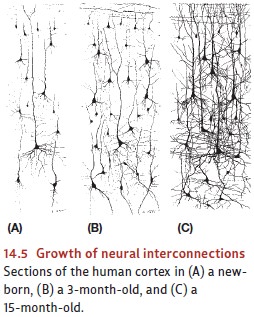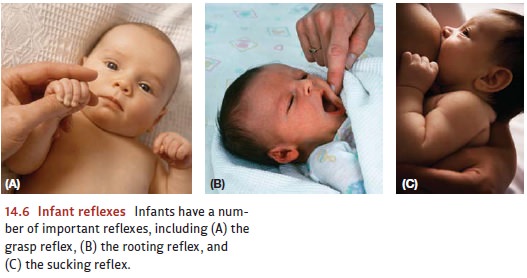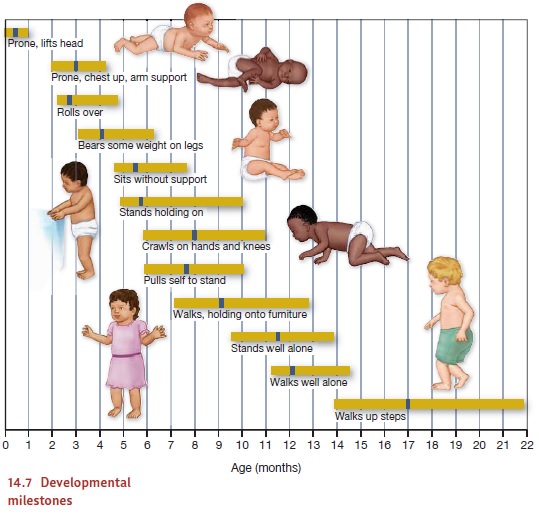Chapter: Psychology: Development
Physical and Sensorimotor Development in Infancy and Childhood

Physical and Sensorimotor Development in Infancy and
Childhood
The
immaturity of the human infant is apparent if we examine the brain itself.
Figure 14.5 shows sections of the human cortex in a newborn, a 3-month-old, and
a 15-month-old child (Conel, 1939, 1947, 1955). Notice that the number of
neural interconnections

grows
tremendously during this period. Indeed, by one estimate, new neural
connec-tions are formed in the infant’s brain, and old ones removed, at an
astonishing rate of 100,000 per second (Rakic, 1995).
This
growth in brain size and complexity, and, indeed, growth in all aspects of the
child’s body, continues for many years, coming in spurts that each last a few
months. This pattern is obvious for growth of the body (Hermanussen, 1998) but
is also true for the child’s brain, with the spurts typically beginning around
ages 2, 6, 10, and 14 (H. T. Epstein, 1978). Each of these spurts leaves the
brain up to 10% heavier than it was when the spurt began (Kolb & Whishaw,
2009).
Even
at birth, the infant’s immature brain is ready to support many activities. For
exam-ple, infants’ senses function quite well from the start. Infants can
discriminate between tones of different pitch and loudness, and they show an
early preference for their mother’s voice over that of a strange female (Aslin,
1987; DeCasper & Fifer, 1980). Newborns’ vision is not yet fully developed.
Though quite near-sighted, newborns can see objects a foot or so away (the
distance to a nursing mother’s face) and readily discriminate brightness and
color, and they can track a moving stimulus with their eyes (Aslin, 1987;
Bornstein, 1985).
In
contrast to newborns’ relatively advanced sensory capacities, infants initially
have little ability to control their body movements. They thrash around
awkwardly and can-not hold up their heads. But they do have a number of
important reflexes (Figure 14.6), including the grasp reflex—when an object touches an infant’s palm, she closes
her fist tightly around it. If the object is lifted up, the infant hangs on and
is lifted along with it, supporting her whole weight for a minute or more.

Other
infantile reflexes pertain to feeding. For example, the rooting reflex refers to the fact that when a baby’s cheek is
lightly touched, the baby’s head turns toward the source of stimulation, his
mouth opens, and his head continues to turn until the stim-ulus (usually a
finger or nipple) is in his mouth. A related reflex, called the suckingreflex, then takes over and
leads the child to suck automatically on whatever is placedin his mouth.
By
her first birthday, the child will have gained vastly better control over her
own actions, and this increase in skill continues over the next decade. These
skills emerge in an orderly progression, as shown in Figure 14.7. Infants first
learn to roll over (typically by 3 months), then to sit (usually by 6 months),
then to creep and then to walk (usually by 12 months). However, the ages
associated with these various achievements must be understood as rough
approximations, because there is variation from one infant to another and from
one culture to another. For example, the Kipsigis of Kenya begin training their
infants to stand and walk early on (Super, 1976), whereas the Ache of Paraguay
carry their children nearly everywhere, leading to delayed onset of walking
(Kaplan & Dove, 1987).

Related Topics